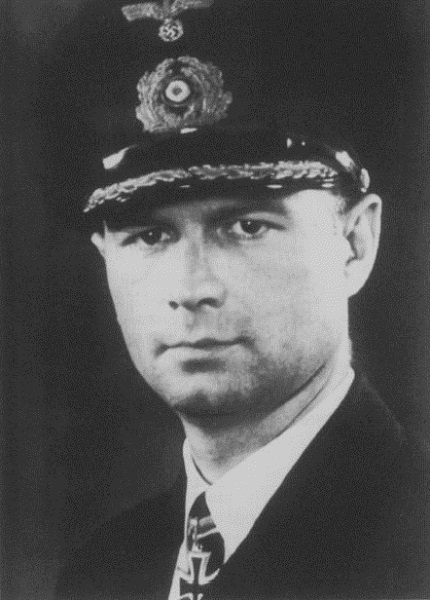Kohlauf, Franz
- Date of birth:
- December 3rd, 1910 (Klosterbeuren, Germany)
- Date of death:
- April 26th, 1944 (Bay of St.Malo, France)
- Buried on:
- German War Cemetery Ploudaniel-Lesneven
Plot: 13. Row: 3. Grave: 91. - Nationality:
- German
Biography
Do you have more information about this person? Inform us!
- Period:
- Spanish Civil War (1936-1939)
- Awarded on:
- June 6th, 1939
- Period:
- Second World War (1939-1945)
- Awarded on:
- December 6th, 1939
- Period:
- Second World War (1939-1945)
- Awarded on:
- April 20th, 1940
- Period:
- Second World War (1939-1945)
- Awarded on:
- December 30th, 1940
- Period:
- Second World War (1939-1945)
- Rank:
- Korvettenkapitän (Lieutenant Commander)
- Unit:
- Chef 4. Torpedobootflottille
- Awarded on:
- October 29th, 1943
“The Führer awarded the Knight’s Cross of the Iron Cross to Korvettenkapitän Franz Kohlauf at the recommendation of the supreme commander of the Kriegsmarine, Großadmiral Dönitz. As a torpedo boat captain, Korvettenkapitän Kohlauf had already shown exemplary bravery during the Norwegian campaign. However his greatest success took place while he was serving as the flotilla commander of a Torpedobootsflottille. This was namely the sinking of the British cruiser “Charybdis” and the destroyer “Limbourne”.
At the beginning of the nocturnal operation the enemy had been able to get into a good position to employ its overwhelming firepower. Nonetheless, by way of a clever battle maneuver, the German flotilla commander was able to bring his ships to a point where their torpedoes would be certain to hit. Through his personal bravery, Kohlauf was thus able to overcome the critical situation and accomplish a tactical success of extraordinary proportions.”








